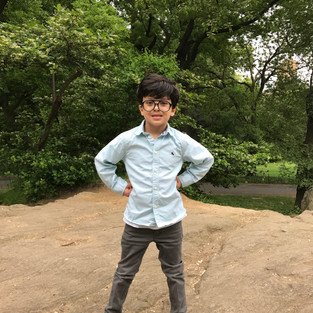Want to connect with your grandchild during the COVID-19 crisis but aren't sure how? Here are some ideas to help get you started …
Phone calls:
Ever feel like your phone call to your grandchild seems more like an interview than a conversation? When children are inexperienced with phone calls, the caller (you!) may find yourself asking question after question trying to help fill the air and find a way to engage the child. If this sounds like your experience, here are some things that might help:
First, let's understand why this happens. Children with autism experience difficulties with language, particularly in their understanding of what someone else is saying and in their ability to stay on topic and maintain a conversation. For those of us without autism, we use context cues, tone of voice, expressions, and analytical thinking to understand what people are saying. In fact, we often INFER meaning in conversation. For children with autism this is much harder as they struggle specifically in this area. For children who are nonverbal, this is further complicated because they may use a language device, sign language, or other means to communicate that you may not know how to use as well. However, for all of these children, there is a way for you to communicate effectively at a distance.

Back to the how...
Good old phone calls with audio-only could work, but may be more challenging for children with autism. Because of their difficulty understanding language, the ability to see your face on Facetime or Zoom/Skype gives them added information to rely on when interacting with you. Consider using Facetime or a similar application when making your phone call. If you need help with how to use these tools, here are some links to guide you:
Facetime: https://support.apple.com/en-us/HT204380
Now let’s do it!
First, let’s identify what you are going to talk about as we want to avoid the uncomfortable interview that can happen. Again, keep in mind that random conversations are harder for children with autism. Instead, it is best to have an interaction that is familiar, easy, and with clear expectations. To do that, think of an activity-based call. Does the child like books? Like pictures? Like videos? Think about something the child really likes and center your phone call around that. It will help the child (and you) to have a targeted goal for the conversation and to work to meet that goal. Also, keep in mind that this phone call is going to be short. The first few calls should focus on having a successful, meaningful interaction. I say QUALITY over QUANTITY when it comes to thinking about how long the call should be. I can share an example of a grandmother “Nana” talking to her grandson. In this example, she made a Facetime call to read a favorite story. She already knew that this story was his favorite and she took time at the beginning of the call to explain her plan to read it. He shared his excitement to hear the book. The call was short and sweet! They connected, had a good interaction, and both left feeling positive about the experience. Next time Nana wants to call, she can think about expanding her interaction even more!
Enjoy your call!






